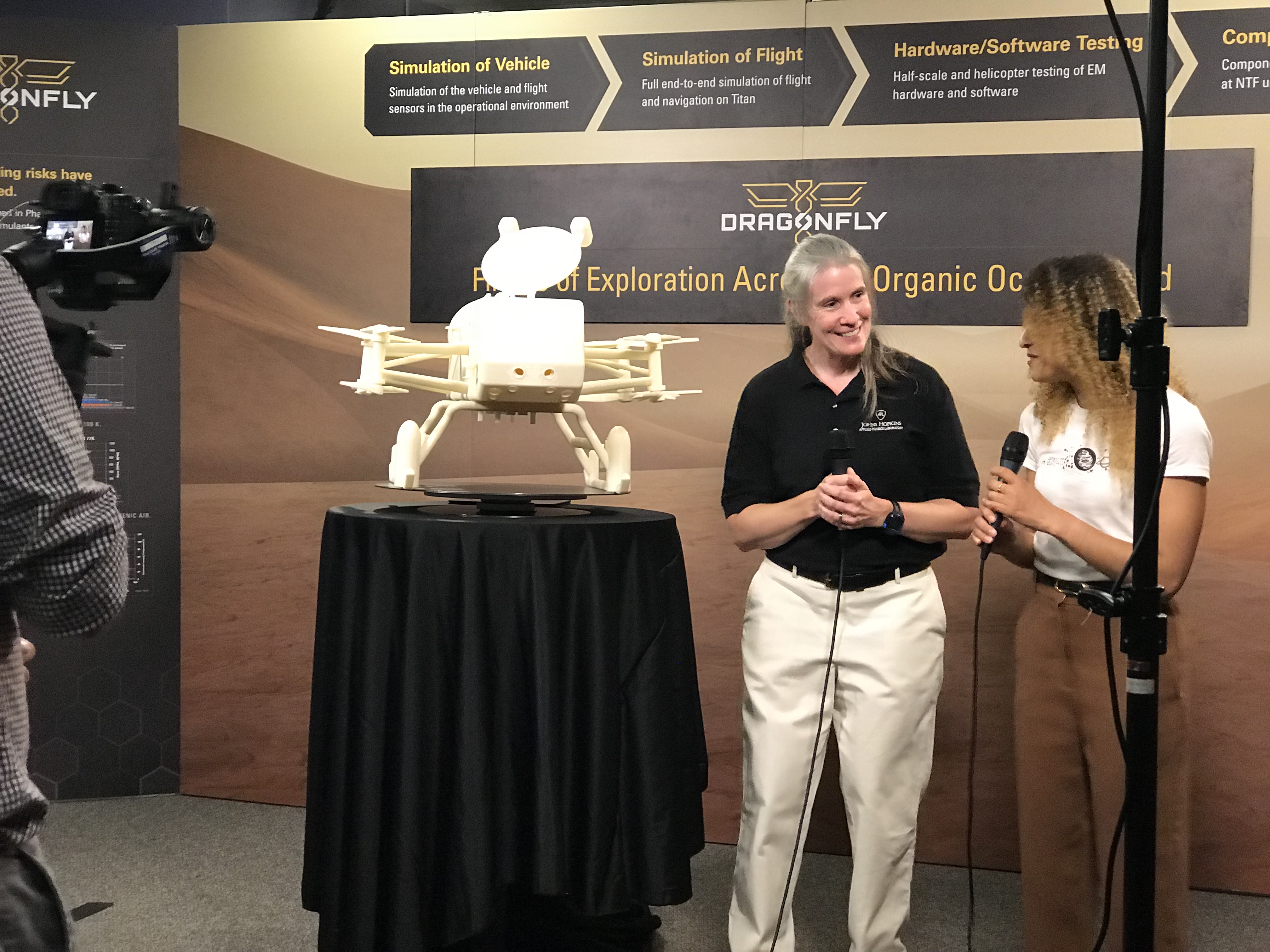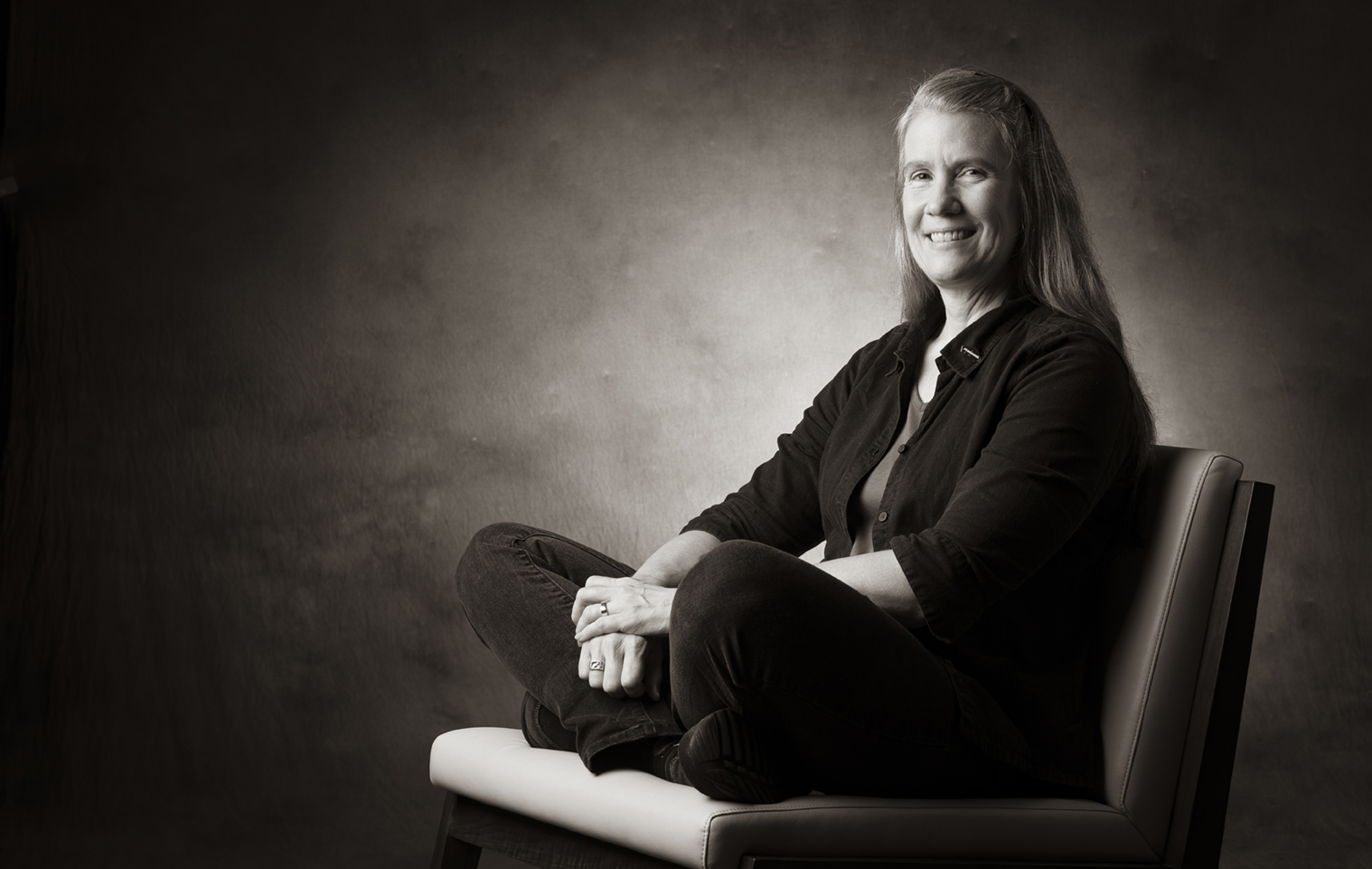Feature Story
Zibi Turtle: Titan of Exploration
She’ll lead the Dragonfly mission to Saturn’s moon Titan. She’ll also lead the next generation of women in planetary science.
The elevator doors dinged open as Zibi Turtle took a breath, and then a step. It was, quite possibly, the final moment of quiet she’d have for some time.
When her feet hit the tile floor in the lobby of Building 200 at the Johns Hopkins Applied Physics Laboratory in suburban Maryland just before 5 p.m. on June 27, cheers and applause erupted. Balloons decorated the windowed entryway of the building — “WE WON,” they proclaimed in iridescent gold — as champagne bottles popped. Elation pulsed through the room.
It was an entrance befitting a rock star.
Dr. Elizabeth P. Turtle, her long gray hair gathered into a haphazard ponytail by a black scrunchie, broke into a grateful, stunned smile.
Her energy seemed boundlessly contagious, even if her face read “blissfully overwhelmed.” Less than an hour before, NASA publicly announced it was funding the APL-led Dragonfly mission to Titan, culminating a multiyear proposal process for a team of hundreds of people. Officially, Dragonfly was now staked in the annals of space exploration history.
The science and engineering behind this daring mission to Titan are fascinating. Dragonfly, a rotorcraft lander, will study environments on this distant moon of Saturn — its largest — such as dunes and impact craters, where liquid water and complex organic materials key to life may have mixed. With a comprehensive package of scientific instruments, Dragonfly will study how far this “prebiotic” chemistry may have progressed — sampling materials thought to contain the organic building blocks of life — while also investigating the moon’s geology and its unique atmosphere. Flying (instead of driving, like the Mars rovers) will allow Dragonfly to cover over 100 miles and explore at least 20 different landing sites during its more than 2½-year mission.
It’s a game-changing method of planetary exploration with potential to revolutionize how we understand the chemistry that led to the development of life on Earth.

Photo credit: Johns Hopkins APL
But amid the genuine excitement about what humanity could learn from this mission, there was another, perhaps even more powerful, undercurrent of emotion accompanying NASA’s announcement: joy.
Joy, particularly, for Zibi.
“I’m just so proud to be represented by her,” said Shannon MacKenzie, a postdoctoral researcher at APL and member of the Dragonfly team.
Watching across the country at the Astrobiology Science Conference in Bellevue, Washington, MacKenzie noted the room exploded into cheers twice during NASA’s live broadcast of the announcement: first at the revelation of Dragonfly’s selection. Second, when Zibi Turtle — principal investigator (or PI) of the Dragonfly mission and the third female NASA planetary mission PI in history — appeared on screen.
During the celebration at APL, which included the Laboratory’s director, Ralph Semmel, Zibi took the stage for just a brief moment, speaking for under 50 seconds. Her message was delightfully Zibi: “This is not me,” she said as applause echoed, thanking “everyone,” multiple times. Her voice was thick with emotion.
“This is everyone. Thank you all. Go Dragonfly!”



